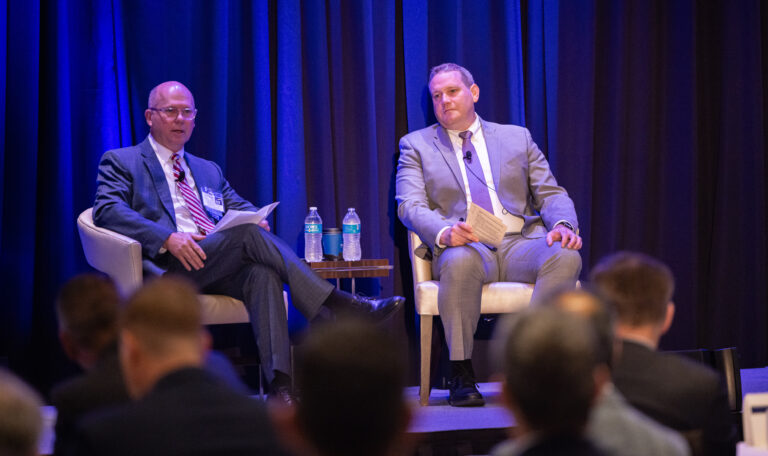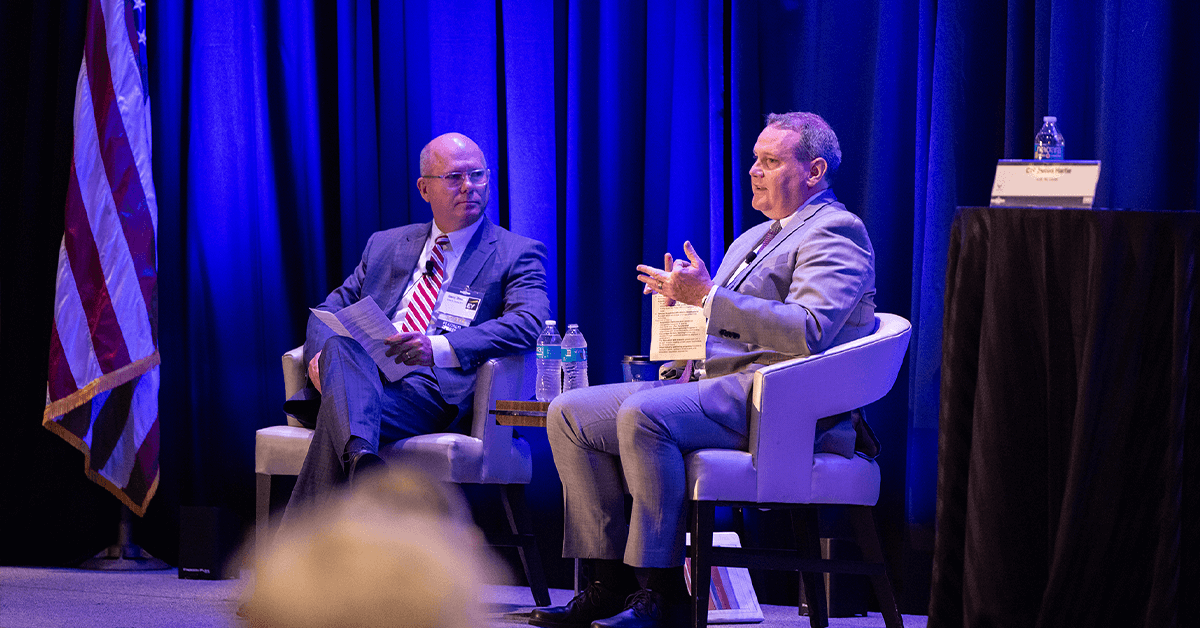The U.S. Department of the Air Force is looking toward a revised strategy in how it goes about procuring technologies from industry partners and encouraging innovation in the commercial sector. In order to speed up the fielding and implementation of new tools, DAF leaders are turning to alternative sources for products and services.
“We have to shape the innovation base by reaching out to non-traditional suppliers who have innovative technologies we need and who are able to…work with our more traditional partners to deliver the capabilities that only they can provide significantly faster than we have historically,” commented the Hon. Andrew Hunter, assistant secretary of the Air Force for acquisition, technology and logistics. Hunter engaged in a fireside chat with EY Government and Public Sector Managing Partner Gerry Dixon at the Potomac Officers Club’s 2023 Air Force Summit on Tuesday.
For a full schedule of upcoming POC events, click here. They include the essential upcoming 2023 Army Summit and the Preparing for the Contested Logistics Era Forum.
2023 Wash100 Award recipient Hunter said this new tact means taking the best of what both non-typical and standard-bearing members of the industrial base can offer and “marry”ing their “talents, expertise and strengths.” The DAF will then work to coalesce these offerings into a unified arsenal “because it’s really integrated capability that we’re looking for.” Speed is important because the United States’ pacing challenges (primarily China) are modernizing very quickly, so the goal is to field “operationally relevant military capability as fast as possible.”
 One of the things that hampers this progress and efficiency, said the executive, who commands an acquisition budget of $60 billion, is the difficult process of letting go of systems that have done the service branch a lot of good in the past but are nonetheless now outdated. In certain cases, these tools still bear some capabilities that are useful “but not enough,” and thus need to be divested and sunsetted.
One of the things that hampers this progress and efficiency, said the executive, who commands an acquisition budget of $60 billion, is the difficult process of letting go of systems that have done the service branch a lot of good in the past but are nonetheless now outdated. In certain cases, these tools still bear some capabilities that are useful “but not enough,” and thus need to be divested and sunsetted.
Programs that are being overturned might in some instances make way for new artificial intelligence-based programs, with which Hunter says the department has made notable headway.
“We are working to identify the kinds of autonomy capabilities for uncrewed aircraft that are robust enough to not just do flying orbits, but to do more complex warfighting tasks. And a lot of progress has been made on that,” he said.
However, Hunter cautioned that while AI often functions swimmingly in test runs and isolation, in contested environments like bad weather or nighttime settings, it has proved less effective and even considered “brittle.” He indicated that most AI applications would need to be strengthened and matured further before they could be deployed at a mass scale.
“If we’re going to have military professionals rely on an AI-generated piece of information and say, ‘your life is on the line and other people’s lives are on the line’…it needs to be accurate…it’s about building trust in the artificial intelligence, that what it’s delivering to the warfighter can be relied upon [in] life or death, high consequence situations,” Hunter expressed.
If you’re interested in government officials and private sector experts alike drilling down on how to develop sturdy and reliable AI systems, make sure to register for and attend ExecutiveBiz’s Trusted AI and Autonomy Forum. The event will take place on Sep. 12 at the beautiful 2941 Restaurant in Falls Church, Virginia and feature a keynote speech by top Department of Defense AI executive Kimberly Sablon.
















